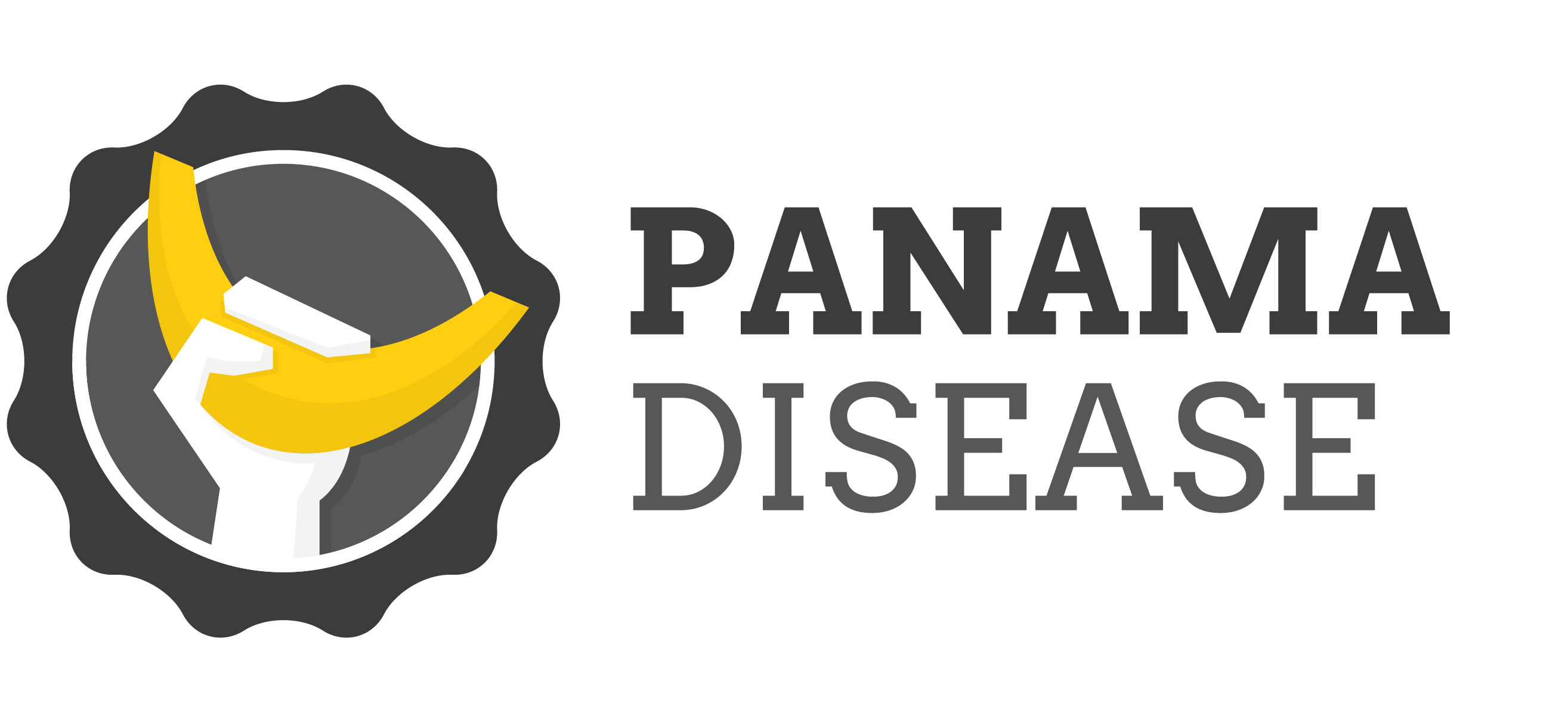Nov 19, 2018 | Publications
In an article in the PLOS One journal researchers identified a gene and protein that is required for full virulence of the fungus that causes Furasium wilt in Cavendish banana. A mutant of the Fusarium oxysporum f.sp. cubense (Focub) SIX1a gene was tested in the banana plant. This mutant was found to be severely compromised in its virulence. When the gene was reintroduced virulence was restored to wild type levels.
More about the research in the PLOS One article ‘A SIX1 homolog in Fusarium oxysporum f.sp. cubense tropical race 4 contributes to virulence towards Cavendish banana.’
Back to News page
Nov 12, 2018 | Studies
On October 17th 2018 Nadia Ordóñez defended her PhD entitled ‘A global genetic diversity analysis of Fusarium oxysporum f.sp. cubense (Foc)’ at Wageningen University. In her research the genetic and geographically diversity of Tropical race 4 (TR4) strain of Foc was mapped out using DNA sequencing methods.
Bananas are an essential staple food and a significant income for agricultural-based economies in developing countries. Fusarium wilt of bananas, popularly known as Panama disease, is one of the most threatening fungal diseases of banana production. Foc is the causal fungal agent of this disease. The TR4 strain of this fungus affects many local banana varieties as well as the Cavendish cultivar, which accounts for 85% of world trade in bananas. Since all Cavendish bananas are clones of each other and there is little variation, they are highly susceptible to TR4, making the sector extremely vulnerable.
In the research of Nadia a molecular detection tool to monitor the spread of TR4 was developed. This assay enables rapid, routine and unambiguous detection of TR4 in the field and is therefore of immense value for charting the progression of its spread. That this is urgently needed, the results provide an image that all TR4 isolates, regardless of the year of isolation and country of origin, were highly infectious on both ‘Gros Michel’ and ‘Grand Naine’ banana varieties , underpinning the risk for banana plantations that only rely on these cultivars.
Back to News page
Nov 5, 2018 | Publications
Recent research on improving banana cultivation is bundled in the new publication ‘Achieving sustainable cultivation of bananas Volume 1’. Both the banana research community as well as banana producers will find information from all over the world about the current challenges in banana production, improving cultivation practice across the value chain, from propagation to harvesting, packaging and ripening, and ways of measuring and improving the environmental impact of banana cultivation.
Throughout the book attention is paid to pests and diseases affecting bananas, including Fusarium wilt. Highlights of the book include: the latest research on banana domestication and genetic diversity; new research on the limitations of current good agricultural practices and how areas such as soil health can be improved; and summaries of best practice in neglected but critical areas such as harvesting and ripening operations.
More information and the opportunity to order the book at the publishers website.
https://shop.bdspublishing.com/checkout/Store/bds/Detail/WorkGroup/3-190-55859
Back to News page

Recent Comments